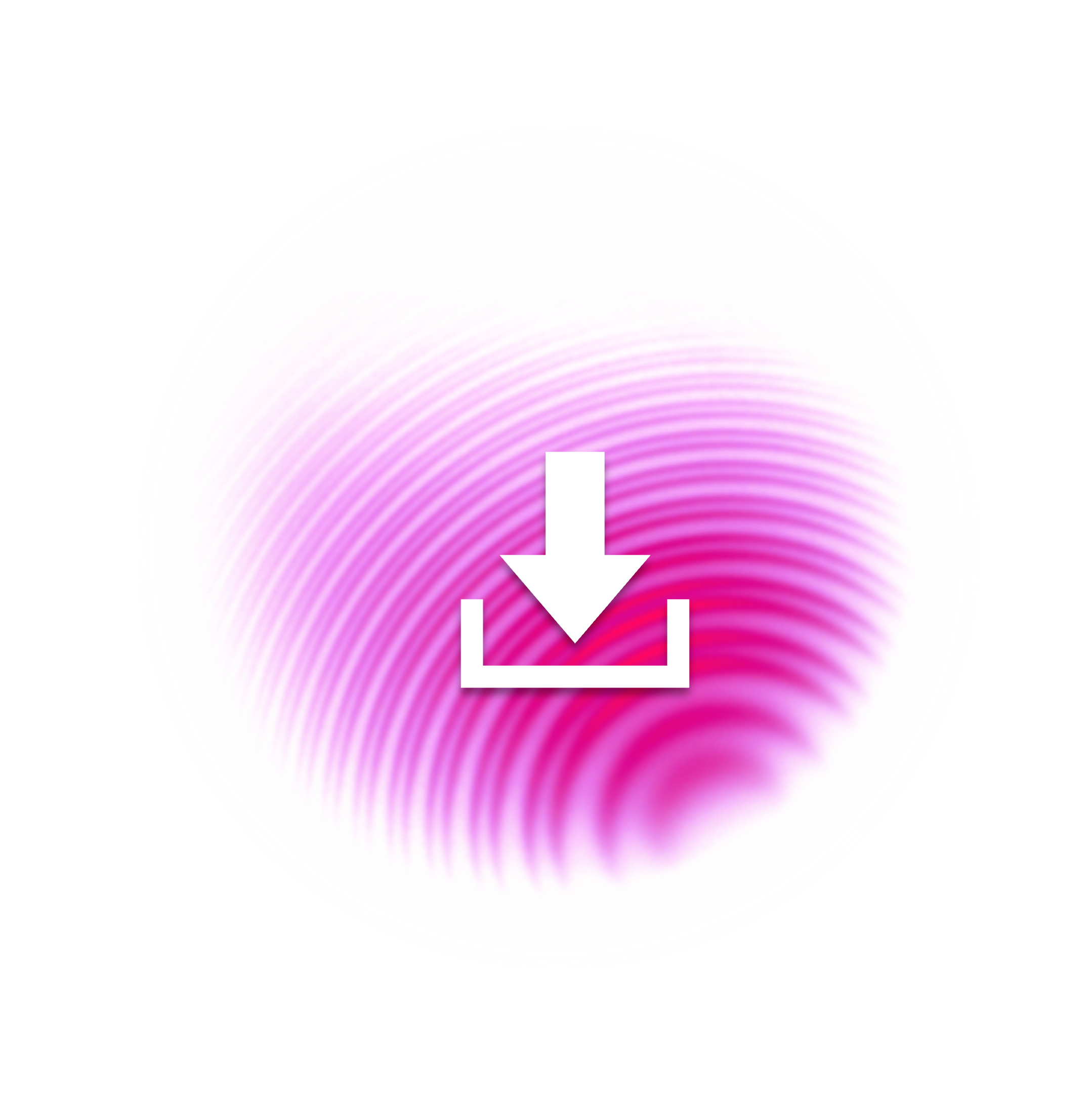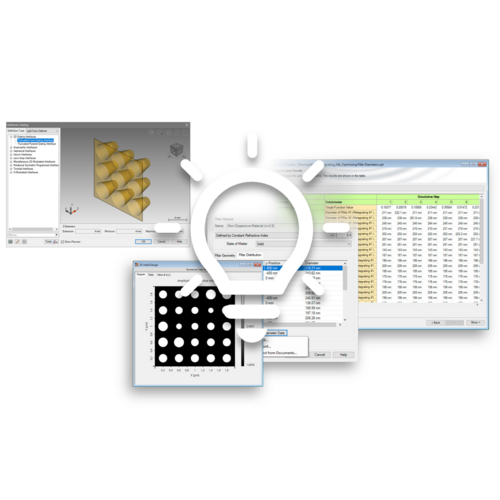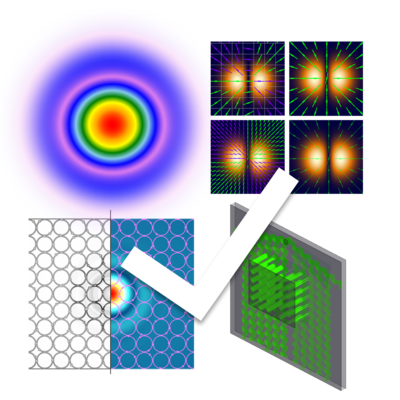VirtualLab Fusion
The Multiscale Optical Simulation and Design Platform
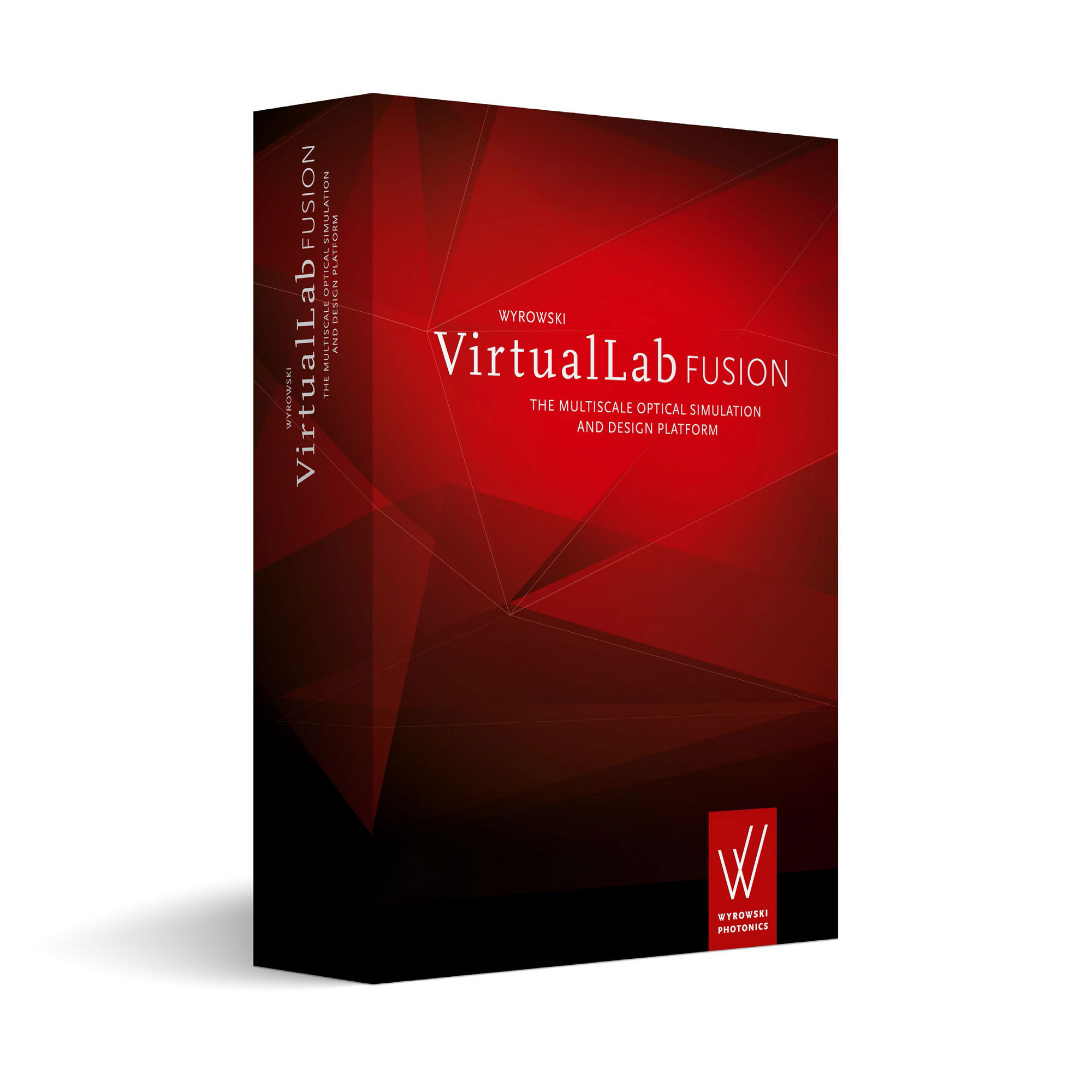
Multiple Simulation Models on a Single Platform
VirtualLab Fusion software provides a suite of simulation models tailored for a wide variety of components and structures, addressing all scales from the tiny to the large.
Simulation models include techniques such as the:
- geometrical-optics techniques for lenses and freeform surfaces,
- Rigorous Coupled Wave Approach (RCWA) for analyzing gratings,
- Fourier Modal Method (FMM) enhanced with Perfectly Matched Layer (PML) technology for all types of nanostructures,
- solver for coatings and stratified media,
- specialized solvers for flat optics
- split-step methods for graded-index and microstructures,
- models for simulating crystals, waveguides, and fibers, and
- simulation models utilizing BSDF data.
VirtualLab Fusion technology revolutionizes multiscale simulation and design for optical systems.

Vast Collection of Optical Components and Structures
The VirtualLab Fusion platform allows you to independently run each simulation model and investigate optical components and structures such as:
- lenses and freeform surfaces
- nano- and micro-scale structures
- gratings and lens arrays
- diffractive and holographic optical elements
- metalenses
- optical diffusers
- GRIN lenses
- coatings
- scattering surfaces
- polarizer and crystals
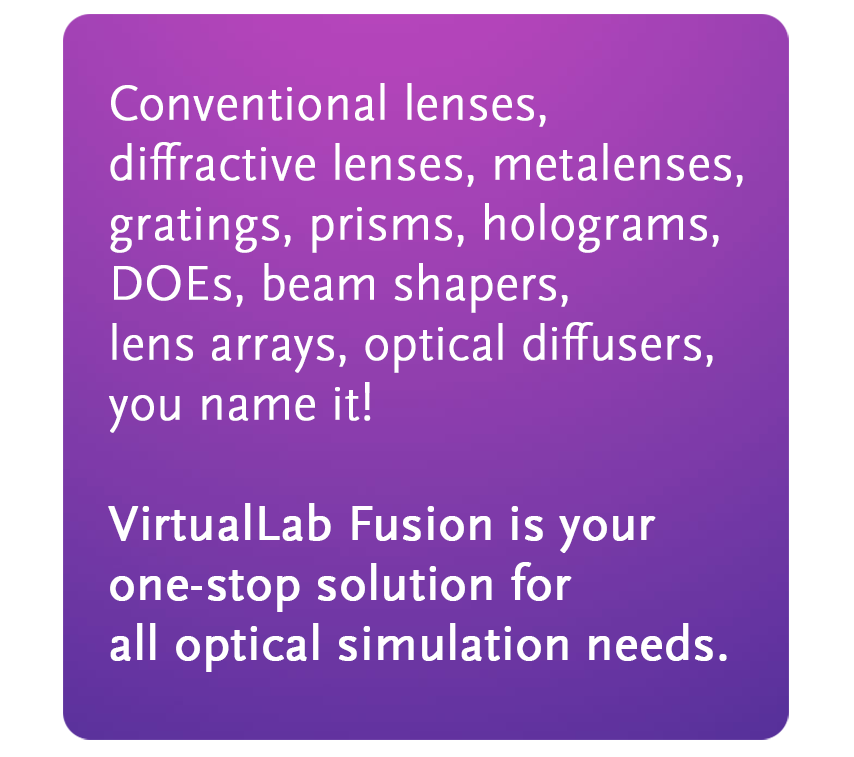
Connecting Diverse Simulation Models for Multiscale System Modeling
The full power of VirtualLab Fusion comes alive when modeling a 3D optical system, composed of various components and structures, irrespective of differences in scale.
Every component and structure has its specific simulation model, and VirtualLab Fusion autonomously connects these models in a non-sequential manner for system simulation. This groundbreaking technology takes system-level multiscale optical modeling and design to a whole new level.
With its one-of-a-kind technology, VirtualLab Fusion delivers unparalleled flexibility for simulating optical systems across diverse applications.
Unmatched Flexibility in Addressing Application Scenarios
With its one-of-a-kind technology, VirtualLab Fusion delivers unparalleled flexibility
for simulating optical systems across diverse applications. For instance, consider these
examples:
- assessing aberrations and MTF in lens systems,
- investigating different interferometer configurations,
- analyzing microscope image formation for nanostructured objects,
- studying lens systems that include gratings, diffractive optical elements (DOE), and metalenses,
- exploring Fourier optics setups,
- evaluating laser beam systems,
- creating and analyzing vortex beams,
- simulating lightguides for AR/MR glasses,
- experimenting with various sources such as lasers, laser diodes, VCSELs, LEDs,
- and x-rays, or
- monitoring the spatio-temporal evolution of ultrashort pulses in optical systems.
